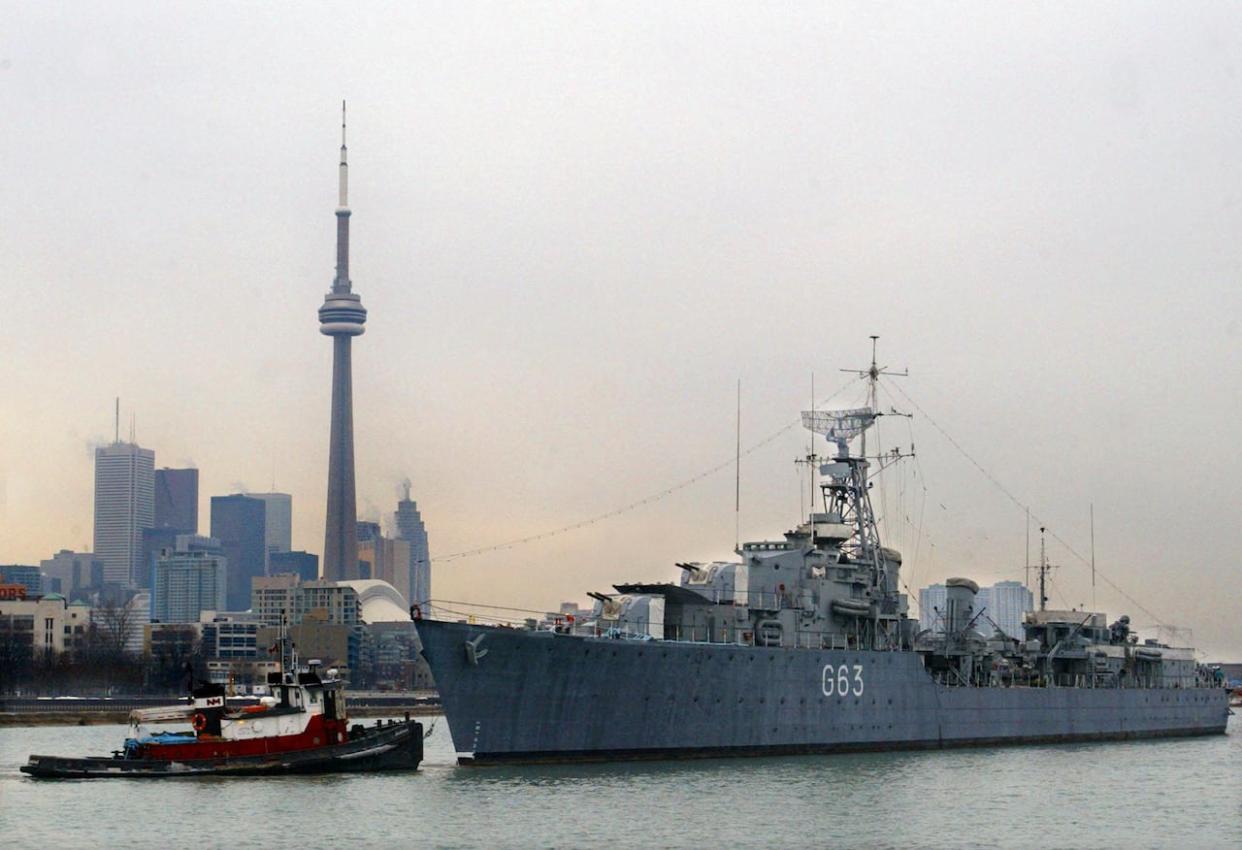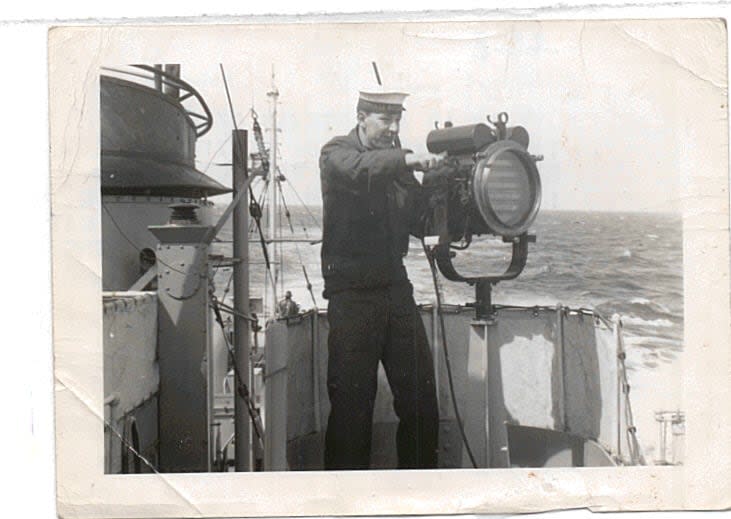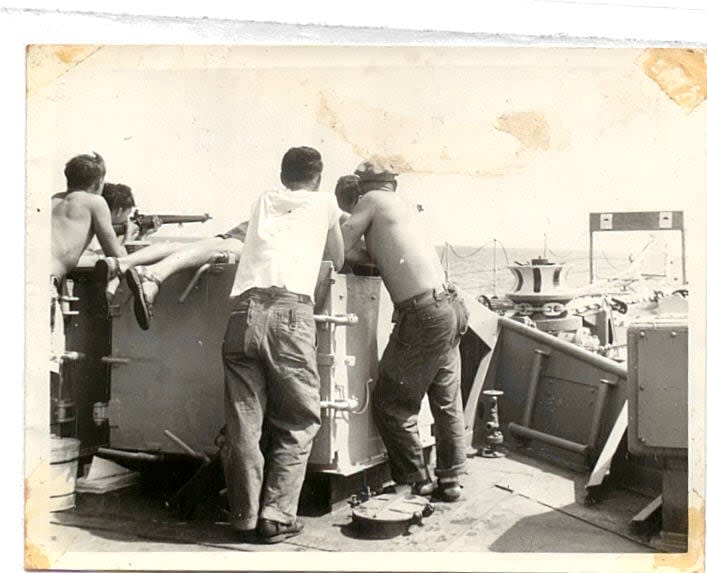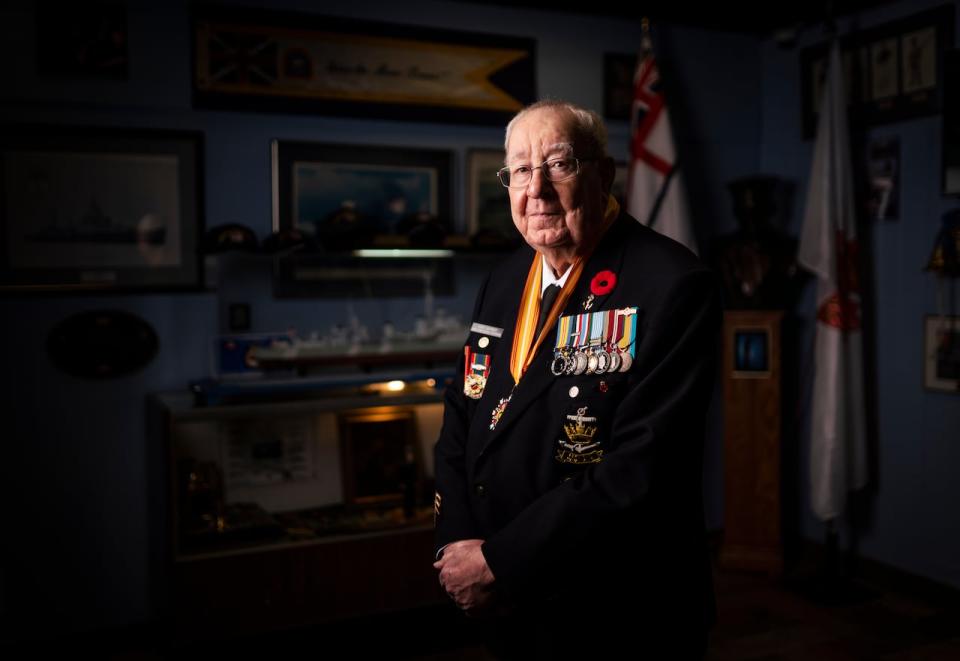HMCS Haida — the 'fightingest' ship in the Royal Canadian Navy — turns 80

It was one of those damp, bone-chilling days so common in Halifax in late December when Andy Barber first caught sight of his new posting in the harbour.
He didn't think much about it at first. For the 20-year-old veteran signalman, the posting was in some respects just another job.
It was 1953 and his new home — the destroyer HMCS Haida, which turns 80 on Aug. 30 — was just out of refit and preparing to steam to the Pacific, where it would patrol the uneasy waters off Korea. A shaky armistice in the Korean conflict had taken hold only months earlier, silencing the guns after three years of bloody, unrelenting warfare.

A young Andy Barber stands at the signal station aboard HMCS Haida during its Pacific deployment following the armistice in the Korean conflict. (Andy Barber)
Laid down in 1941 and commissioned in August 1943, Haida was among a small fleet of heavily armed "tribal class" destroyers acquired by the Royal Canadian Navy at the height of the Battle of the Atlantic. They were intended less for convoy protection and more for taking the war to the Nazis by hunting U-boats and German shipping.
Under Commander (later Vice-Admiral) Harry de Wolfe, Haida and her crew did that work with a fearlessness that eventually earned the vessel the unofficial title of "Fightingest Ship in the Royal Canadian Navy." It was responsible for sinking 14 enemy ships in just over a year.
A naval legend
Barber said he felt no particular sense of history as he took in the warship's slate-grey lines on that December day.
"I didn't know what a significant part that she had played in World War Two," Barber told CBC News in a recent interview. "Listening to the guys I did, but you know, at that age, it's in one ear and out the other."
Several of the crew at the time, including the yeoman, had served aboard Haida during the Second World War. Over the mess table, they would trade stories that Barber would overhear as the ship made its way to Korea.
Only later, after he learned more about the ship's history (and became its unofficial ambassador), did Barber become steeped in the lore of the Haida.

Crew members crowd around a gun on the deck of HMCS Haida during its Pacific deployment. (Andy Barber)
At the time he joined the crew, Barber was more preoccupied with the deployment to what had been a war zone only recently. During the tension-filled patrols along the misty Pacific coastline, the ocean continued to give up its dead.
From his perch at the signal station on the open bridge, Barber would see bloated bodies float past the hull — remains that had to be collected by a nearby South Korean gunboat.
"You couldn't tell most times whether they were enemy or fishermen," he said.
Barber may not have served during wartime but he was on the Haida's bridge when it was almost lost to Typhoon Grace off Japan in 1954.
He remembers the 2,500-tonne destroyer being tossed around on the ocean like a toy, and recalls the superhuman efforts of his shipmates to keep her afloat.
"We were running into these waves that were, like, 60 feet high, crashing over the top of the ship," Barber said.
'We all went flying'
At one point, the Haida was caught in a confluence of waves, swamping the bow while the stern with its spinning propellers was raised out of the water.
"We all went flying to one side and that whole ship just about somersaulted," Barber said. "It was only through the grace of God … that it straightened out."
Haida served the Canadian Navy for 20 years. According to Barber, roughly 6,000 sailors called the ship home at various times over those decades.

Andy Barber poses for a picture at the Halton Naval Veterans Association in Burlington, Ont. on November 6, 2020. (Mark Blinch/The Canadian Press)
It was originally slated to be scrapped in the early 1960s after being decommissioned but was saved and turned into a floating museum and memorial, initially at Ontario Place in Toronto. The destroyer is now a National Historic Site administered by Parks Canada on the Hamilton, Ont. waterfront.
Barber often talks with tour groups and asks them to think about the thousands who served aboard the ship through peace and war.
"I'd like people to know that's a beautiful piece of Canadian history that's sitting in Hamilton at Pier 9," he said.
Aug. 30 is the 80th anniversary of the Haida's commissioning and events are planned on the Hamilton waterfront over the next few days to celebrate the milestone.


